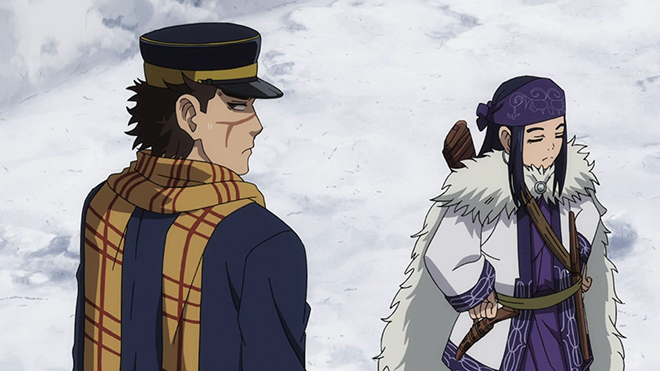Quarantine Control #34: Zooms for Giving

Happy Thanksgiving! As happy a Thanksgiving as it can be, anyway. We’re talking about celebrating this holiday in the year 2020, one that’s been downright pitiful all around thanks largely (though certainly not entirely) to the Covid-19 pandemic. Cases just happen to be climbing at a time when a lot of people would be flying to see their family to celebrate the occasion, which can’t happen unless you want this holiday to assuredly be the last time you see some loved ones. It’s unfortunate that we’re a deeply stupid group of people, because plenty of Americans decided to travel anyway. The next few weeks will be a special kind of hell in multiple ways, perhaps including Christmas.
If you’re responsible, you might be celebrating the holiday in small groups or alone — Zoomsgiving it, as the extremely online kids say. Fortunately, there’s plenty of entertainment to consume while lounging about.
Joseph Daniels
I wish that I could really tell you
All the things that happened to me
And all that I have seen.
The song “Keep It Dark” was written by Genesis for their 1981 album Abacab and describes the peril that an unfortunate gentleman had just been through. A gang of thieves kidnapped him and intended to rob him but when they found out that he didn’t actually have any money, they eventually released him and he wandered back home, happy to be alive and able to see his family again.
…except that’s not what actually happened to him.
It seems strange to have to lie,
About a world so bright.
And tell instead a made-up story,
From the world of night.
It turned out that the man had found himself in a world of joy, a world that had done away with war and deceit. The cities were bright and optimistic and everyone looked forward to the future. When the song was written, it was intended that the man had been to the future, but next year is the 40th anniversary of the album and we’re no closer to the paradise described in the song. In fact, now more than ever, a bright and optimistic future is so unbelievable that perhaps telling everyone that you were kidnapped for a while is the more credible option.
The man in the song found himself Narnia’d for a while, in seemingly another world and the worst thing was, when he came back, he couldn’t tell anyone about it. If not for his family back home, he probably would’ve preferred to stay in the city of light. Fortunately for him, he didn’t take a one way trip.
For the last few Quarantine Control columns, I’ve been showcasing isekai anime where the trip is temporary and you can return to your own world. But what if the trip was one way and you were permanently stuck in this other world? I suppose if you’ve found yourself suddenly transported to another world, you don’t know for sure if you’re going to be able to return home, so you have to be ready to accept that it might be a permanent trip. There’s a sinking feeling in the pit of your stomach as dread takes over and you realize you’re in over your head in a world you know nothing about, and despite that you’ve been playing video games for years, you can be reasonably certain that you don’t want to see whether death is temporary or permanent in this new world, since you don’t want to be wrong. So you’d rather not take a chance at becoming an adventurer in this world, even if it resembles the fantasy games you like the best. A bit of panic sets in and you wonder if you’re ever going to see your family and friends again, and the only thing that snaps you out of it is a stern nip from your squirrel companion who made the journey with you and manages to talk some sense into you and convinces you to at least try to get by in this new world until such a time when you can attempt to figure out a way home.
Well, I mean, I imagine that must be what it would be like to find yourself in an alternate world. Hypothetically.
I wish that I could really tell you…
Ascendance of a Bookworm (2019)
Source: Crunchyroll
Episodes: 28; third season announced

There are a few ways for an isekai anime to make the trip permanent. It could just refuse to return the characters home, which I can imagine is anyone’s fear when suddenly finding yourself in a different world. One common method of instilling a sense of permanence into the transition is by establishing that the character died in their original world. In that sense, Uma Musume Pretty Derby and its comedic spin-off Umayon could be considered isekai anime as well, since the horse girls are the reincarnated souls of race horses from our world.
This is a popular mechanic in isekai anime since we really don’t know what happens after we die. The three most common beliefs are as follows:
Our souls pass on to the afterlife depending upon our deeds in this world. The mechanics differ between religions, but in some cases, you’re judged based on your actions in life and in one prominent case, the sole determining factor is whether or not you believe wholeheartedly that Jesus Christ died for your sins and that you’ve accepted him as your saviour.
Our souls reincarnate back into new mortal shells, with your new life determined by how you conducted yourself in your previous life. Your new life would not necessarily be human, you may reincarnate into the form of a wolf or you may become a cockroach instead. That said, most psychics and mediums who specialize in past lives seem to subscribe to the notion that all of your past lives were also human.
You just cease to exist entirely and become nothing. This last option is the one currently supported by science since it’s impossible to scientifically prove souls exist and is probably the most terrifying of the three, which is why most people would prefer to believe that their soul will exist in some manner beyond death. This is where the Lifestream in Final Fantasy VII came from, for the game was created to help Hironobu Sakaguchi deal with the death of his mother. The concept that there is some form of life after death is prevalent in a lot of fiction.
Myne (alternately spelled Main but pronounced like “mine”) is the reincarnated soul of a bookworm from our world who died in a library during an earthquake, when a large pile of books fell upon her. Talk about heavy reading. Urano (the bookworm from our world) then wakes up as a young girl in an alternate world who is sick with what is called The Devouring, which manifests among the peasantry only when one is born with mana, something which only the nobles are supposed to be able to use.
When she wakes up as Myne for the first time, she decides she’d like to read something to help comfort her, but she has no books. In fact, books are considered a luxury item in this world. There is no such thing as a mass market paperback, since not even paper is that common. Books are instead rare artifacts that are locked away.
So if she can’t find a book, Myne decides to make one instead. Over the course of the first nine episodes, Myne tries her best and experiments with the process of making paper, working her way through the various methods that our ancient civilizations tried to craft it. During this time, she also brings a form of shampoo to the other world as well as decorative hair pins. Apparently her books of choice in our world were crafting and how to books.
While developing her method of making paper, she grows close to a boy named Lutz, who she eventually opens up to about her biggest secret, that she’s not really Myne. Despite that it upsets him greatly, he comes to accept Urano as the new Myne and works closely with her to bring her ideas to his world.
This anime is a very wholesome and optimistic tale, and I get the impression that the hardships put in Myne’s way aren’t done so to torture her, they’re there as obstacles that she can overcome through determination. She is very optimistic and enthusiastic, but can’t overdo it or else she gets sick. Still, there doesn’t seem to be any evil to overcome or cruelty to endure here. The main reason to watch Ascendance of a Bookworm is to see how Myne makes a name for herself in this alternate world, where at the age of six, she’s somehow already able to enter into binding legal contracts and start doing business. If anything, I would compare the show favourably to Spice & Wolf, where that anime is aimed towards a more mature audience who would be able to identify with Lawrence and this one is aimed towards a somewhat younger audience who would find it easy to put themselves in Myne’s shoes.
The darkest aspect of this anime by far is the Devouring, but even with it looming over Myne’s head like a sword waiting to fall, she still retains an optimism that things will work out somehow, and it doesn’t dampen her enthusiasm for reading. In fact, Myne discovers a library near the end of the first season and makes a decision that changes her life drastically and which shapes the direction the series takes in the second season.
With the announcement of a third season, the tale of Myne is definitely not over.
Geoffrey Barnes
Dumbo (2019)
Source: Disney+
Episodes: 1 movie

Being familiar with the Disney live-action formula by know, I knew what to expect from the Dumbo remake/reimagining before sitting down to watch it. It was clear from the stills that this adaptation took the colorful aesthetic and, let’s say, “cartoony” aspects of the original and whittled them down for either an older audience or one who simply thinks they’re too old for that kids’ stuff. Upon actually seeing it, I was unprepared for just how much of the charm was sucked out with the Narrative Vacuum. While it would have been fine to create a different kind of adaptation that took ideas from the original Dumbo in a bubble, it doesn’t work when the additions don’t justify their existence.
The live-action Dumbo is more realistic in not only its aesthetic, but the overall presentation. The animals no longer talk, and some from the original have been jettisoned entirely. What’s most hilarious is how the screen time for Dumbo himself has been reduced. Instead, more of the story is focused on the humans who work as part of the circus and those who invest in it, including kids Milly and Joe Farrier (Nico Parker and Finley Hobbins, respectively). The cast includes several well-established actors, in fact, including Colin Farrell, Michael Keaton, Danny DeVito, and Eva Green. It’s a pity that few of them are that memorable, outside Green for her acting chops and Keaton for hamming it up big time. Even the kids are as bland as they are cliched.
It’s a problem that the pacing is all over the place too, partially thanks to longer build-up to showing how Dumbo learns to fly and considerably more focus on all the humans involved. Given how Dumbo lacks most (though thankfully not all) of the charm he contained compared to his 1941 counterpart and the humans being largely unengaging, the movie feels much longer than its actual runtime. The first act moves slowly, and while the second feels like it’s going somewhere, the third gets a little too over the top. It never feels like a movie from Tim Burton, who I was surprised to remember directed it by the time I reached the credits.
It’s never a good sign when you start whipping out the phone to doomscroll during a film, which I did several times during Dumbo. The movie just isn’t engaging enough, and it pales in comparison to the animated original — just the result any cynic would expect. Fully watching it makes it clear this isn’t (solely) nostalgia for my days of yore speaking. This movie has put me off watching any further Disney remakes at the moment, meaning I’ll have to check out the Aladdin and The Lion King remakes sometime down the line. Given everything I’ve heard about them, especially the latter film, I’m not expecting the results to be that much better despite how they made Disney a ridiculous amount of cash.
Shazam! (2019)
Source: HBO on Demand
Episodes: 1 movie (but there’s a sequel coming)

Previews made it clear that Shazam would be a different kind of movie compared to other films in the DC Cinematic Universe, and not just because of the hero it focused on. It would contain serious themes, yes, but it leaned further into the comedy than the other sometimes-joyless films in the DCverse. This immediately led to comparisons to similarly-themed films in the Marvel Cinematic Universe, especially the Guardians of the Galaxy movies and Thor: Ragnarok, all of which are heavier on the humor than others, and balance that with serious themes. (I watched all three of them this year thanks to the pandemic, so they’re still etched into my memory.) Comparisons to Marvel films tend to be detrimental to DC movies, but this fortunately isn’t the case for Shazam.
The joy of Shazam is in good part thanks to the titular character, who approaches every situation with a kid-like naivete because he literally is a kid in an adult’s body. The fun fully starts when orphan Freddy Freeman stumbles upon the power of Shazam, and is forced to learn how to move around in his new, muscular adult body and discover the powers he has. Freddy is accompanied by the other orphans in his foster family throughout the movie, who often help him in his real-life and superhero exploits, with the film giving ample reason to care about them. The same applies to the central villain, whose motivations fit in with the series’ themes and is given ample time to grow.
The movie strikes a good balance between humor and seriousness, even as a good part of the former intensifies about one-third of the way into the film. I mentioned the three Marvel films above for a reason, given how well it compares to them. But it also doesn’t feel like it’s deliberately trying to mimic those films, and crafts its own sense of humor that fits the setting and characters. It does this much better than Aquaman, the humor in which came off as hamfisted and oddly timed. Discussing some of the most simultaneously humorous and enjoyable parts of the film would involve delving into serious spoilers, for a foreshadowed twist that works as a fun surprise for anyone who wasn’t spoiled by the action figure line.
Shazam is a fun time, and a model for future DC films with similar tones — and perhaps even the more Serious Business examples. Like any good superhero film that’s sure to be a hit when it reaches theaters and home video services, it teases a sequel that’s already been given a name, though isn’t due for another two-and-a-half years. Either way, this movie gives me faith in DC’s future movie lineup, and it’s possible Wonder Woman and Birds of Prey could do the same when I get around to seeing them.
Angela Moseley
Happy Thanksgiving to our US readers. (Happy almost-Friday to everyone else.) I hope those of you living in the US right now are enjoying a small, socially distant holiday dinner. You know, it might be the start of the holiday season, but a pandemic is still raging on, so be safe and be smart.
Golden Kamuy (2018, 2020)
Source: Crunchyroll, Funimation, Amazon Prime
Episodes: 32 (as of this writing)

I previously wrote a bit about Golden Kamuy as part of my anime queue purge in September of 2018. Golden Kamuy is an action-packed period piece set in the Meiji era of Japan. It takes place a few years after the Russo-Japanese War ended in 1906 and 50 years after trade between the United States and Japan was forcibly opened by Commodore Matthew Perry. During this era Imperial Japan rapidly modernized as old and new ideas collided, but the days of Shogun dominance were over. With its mixture of industrial age technology, conflicts with indigenous people (the Ainu), and a sense of lawlessness outside of major cities, Golden Kamuy is a Japanese-flavored Western. The first two seasons were great and season three brings more of the same energy.
Saichi Sugimoto is a veteran of the Russo-Japanese war who’s living a hum-drum life as a miner. He survived multiple near fatal injuries during the war, earning himself the name “Sugimoto the Immortal.” After the war he works to provide for his the window of his war buddy. One day he hears a rumor about a large stash of Ainu gold and how its true location is hidden in a series of tattoos on prison escapees. The tattoos form a map. After learning the story is true, he sets off to find the gold intending to help his friend’s widow. In the wilderness, he’s attacked by a bear and saved by an Ainu girl named Asirpa. The two become fast friends and she joins him on a quest to find the gold in Hokkaido and further north. Other groups of people know about and are searching for the gold—this includes main series villain Tokushirou Tsurumi, the 1st Lieutenant of the 7th Division of the Imperial Army, and Toshizou Hijitaka, the vice-commander of the Shinsengumi. While Sugimoto and Asirpa eventually gain their own group, they sometimes collaborate with and are at odds with Tsurumi and Hijitaka’s groups.
Season three takes place after Sugimoto and Aspira are separated during their quest to find the latter’s father. She ends up continuing the search for the gold with members of Hijitaka’s group and they eventually cross the Russian border. Meanwhile, Sugimoto fears that Aspira believes he’s dead. He and his smaller group made up of former members of Lieutenant Tsurumi’s group help him in his search because finding her will most likely lead to the gold. Along the way they meet more tattooed prisoners as they also slowly make their way into Russia.
What really makes Golden Kamuy shine is the mix of political intrigue and historical drama. The heart of the show is Sugimoto’s growing relationship with Aspira, and him trying to move forward after returning home from a brutal war. However, all of the characters are desperately vying for ways find meaning in a turbulent world. Lieutenant Tsurumi wants the gold to compensate the soldiers of his division and to take over Hokkaido so they can manufacture weapons for war. Like Tsurumi, Hijitaka also wants to use the gold and Hokkaido to secede from Japan. Finally, a number of Ainu lived in territory that crosses into Japan and Russia. Some men are part of The People’s Will, a Russian revolutionary organization that uses terrorism and violence in the hopes of overthrowing the Tsar. At this point in the anime it is unclear if they want the gold to help the Ainu or to further their political agenda in Russia.
Golden Kamuy’s events are loosely based on historical facts and figures that occurred in the late 1800s and early 1900s. Add in elements of surviving on the frontier, indigenous representation, criminals in hiding, a few dick jokes, a time period not often explored and you have a uniquely exciting show. The comedic elements ensure that the drama never becomes too heavy. The action balances out the political aspects. The animation is rough at the start, but slowly improves throughout the series. Go watch this anime. Golden Kamuy is far too good for its underrated status.
This is hardly the most joyous Thanksgiving to occur in recent memory thanks to the pandemic and the state of the world, but everyone deserves a day, and perhaps a weekend, of relative tranquility, even if all you can do is think about how bad things are. Perhaps they’ll get better soon enough, but you can never be too certain these days.





